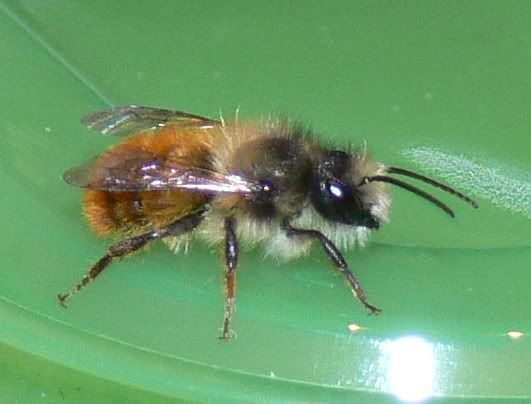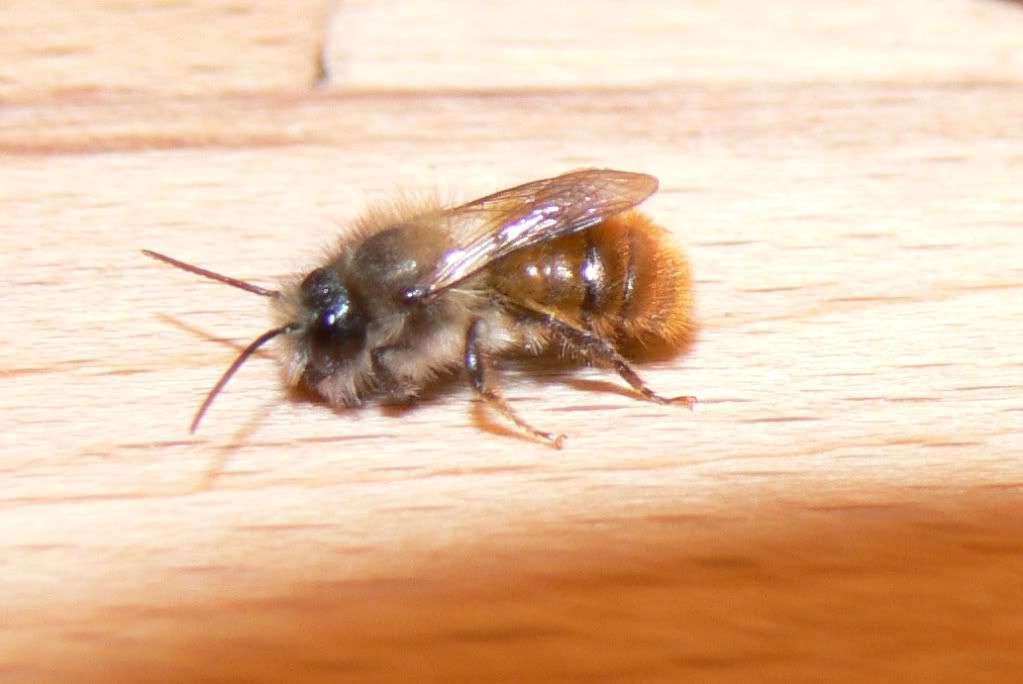Good evening,
I hope you don't mind me popping into the Beekeeping Forum (I'm usually resident on a Springer Spaniel forum - an entirely different kind of beast ).
).
We have recently experienced a few mysterious visitors to our house and I've finally managed to get a reasonable photograph of one - I suspect it might possibly be a species of bee - I wondered if anyone here might be able to help me establish a positive identification.
To give a brief background: from October to December last year we had extensive work down to the ground floor, rear of our house - a single storey brick extension was built - several internal walls removed and the ceiling removed in the back end of the original house - so we have pretty much seen the internal 'skeleton' of the house. It's a 3 storey house so the roof space is quite some distance from the ground floor. The entire ground floor of the house has been tiled and new skirting boards put on too.
A few weeks ago I noticed a small winged creature crawling dozily around the floor in the area where the old house joins the new extension - I didn't think much of it at the time. A few days later two more of the same creatures, again very dozy, were crawling around just outside the understairs area (which is where our dogs have their beds (no door on what used to be the understairs cupboard)) - I scooped them up and popped them outside and felt slightly suspicious at more 'visitors' of the same type. Then this evening one of our dogs started getting agitated in her bed and I found her batting another of these creatures between her paws - I rescued the little winged chap and managed to get some photos.
I am puzzled as to where they might be coming from - and am a little concerned that we might suddenly find ourselves inundated with them ... so, any clues would be very much appreciated.
Sorry for rambling on - here are a couple of photos:


very many thanks for any help anyone can offer.
Nikki
I hope you don't mind me popping into the Beekeeping Forum (I'm usually resident on a Springer Spaniel forum - an entirely different kind of beast
We have recently experienced a few mysterious visitors to our house and I've finally managed to get a reasonable photograph of one - I suspect it might possibly be a species of bee - I wondered if anyone here might be able to help me establish a positive identification.
To give a brief background: from October to December last year we had extensive work down to the ground floor, rear of our house - a single storey brick extension was built - several internal walls removed and the ceiling removed in the back end of the original house - so we have pretty much seen the internal 'skeleton' of the house. It's a 3 storey house so the roof space is quite some distance from the ground floor. The entire ground floor of the house has been tiled and new skirting boards put on too.
A few weeks ago I noticed a small winged creature crawling dozily around the floor in the area where the old house joins the new extension - I didn't think much of it at the time. A few days later two more of the same creatures, again very dozy, were crawling around just outside the understairs area (which is where our dogs have their beds (no door on what used to be the understairs cupboard)) - I scooped them up and popped them outside and felt slightly suspicious at more 'visitors' of the same type. Then this evening one of our dogs started getting agitated in her bed and I found her batting another of these creatures between her paws - I rescued the little winged chap and managed to get some photos.
I am puzzled as to where they might be coming from - and am a little concerned that we might suddenly find ourselves inundated with them ... so, any clues would be very much appreciated.
Sorry for rambling on - here are a couple of photos:


very many thanks for any help anyone can offer.
Nikki






